Mark Bracks on WSBK 2019
With Mark Bracks
Alvaro Bautista’s entry into the into the Superbike World Championship is more than a breath of fresh air, it’s akin to a cyclone ripping through the paddock after his performances at Phillip Island. Or, did an out-of-favour alien land on the Island?
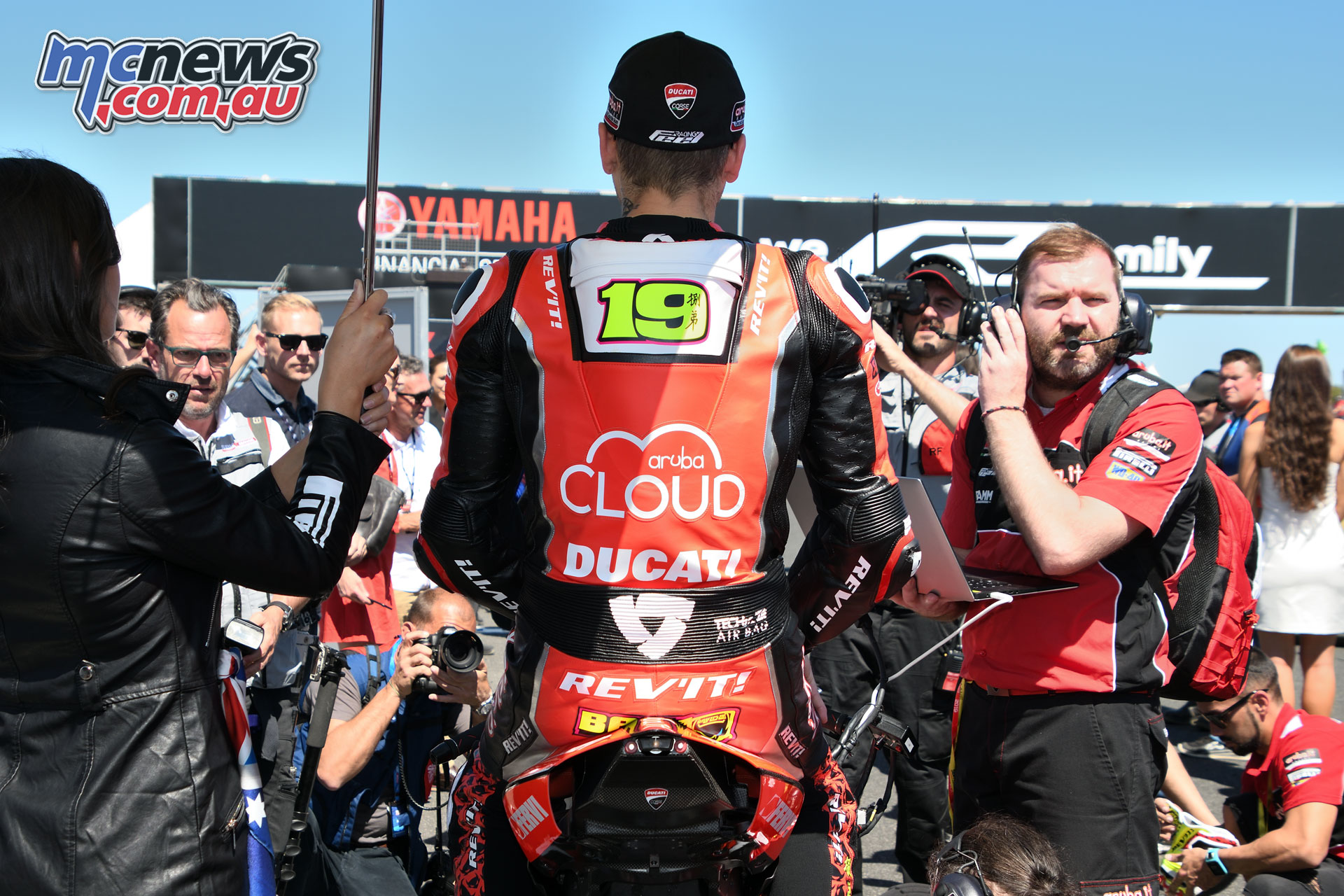
New kid on the WSBK block, or not, the world now knows that Bautista is serious business and has the artillery to get the job done, within himself and what he is sitting on. He also thrives on close contact and will brawl with the best.
Remember some of his duels in the 125cc title chase, more particularly against Marco Simoncelli as they bare knuckled each other in the 250cc ranks? He is certain to get into some street fights as he establishes himself in the World Supers gang, and his performances in the first round of the FIM Motul Superbike World Championship at Phillip Island is worthy of an encore.
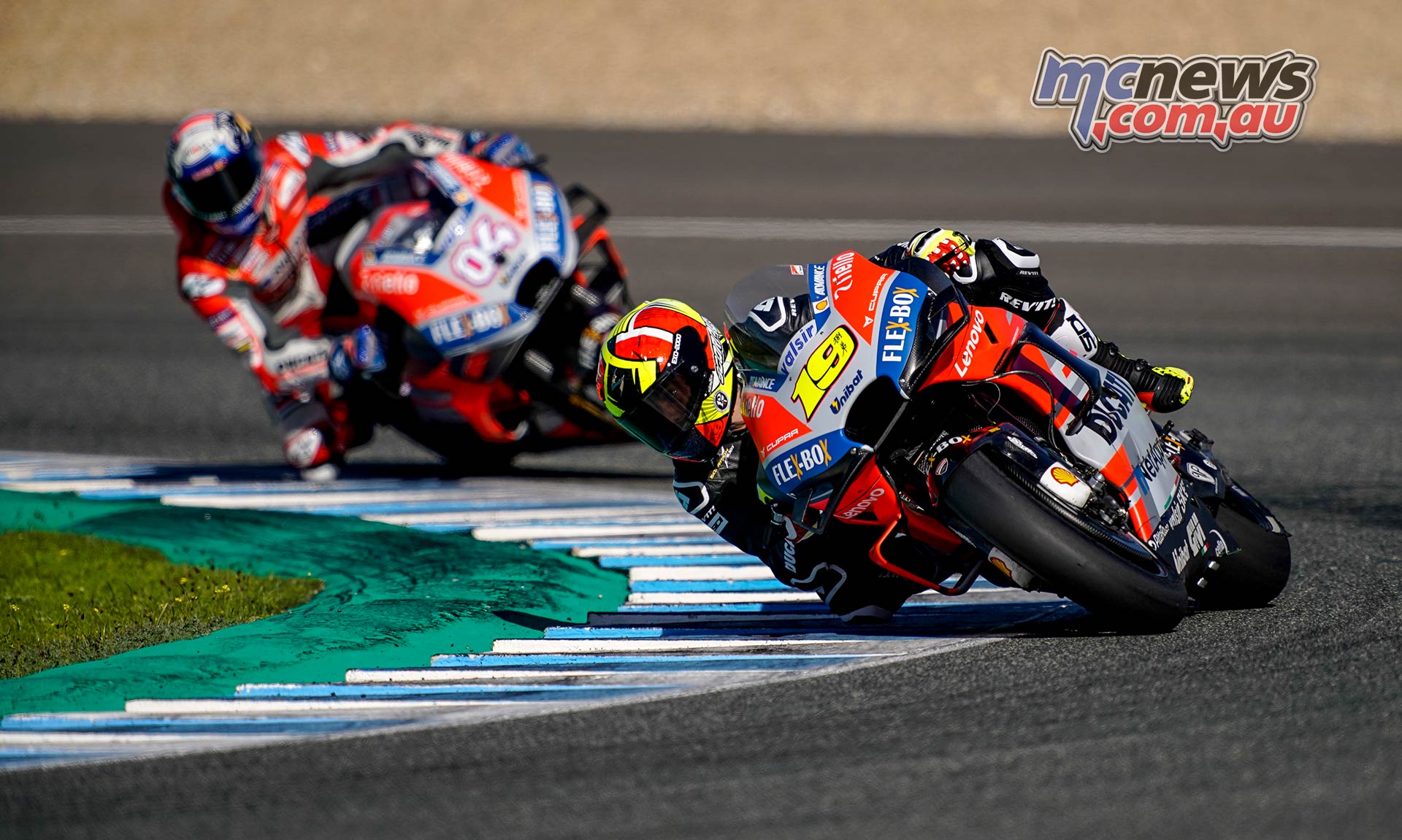
No matter the capabilities of the bike he is riding, whoever thought that as a MotoGP reject Bautista would not make an impact, should now be surrounded in crumbs after eating copious amounts of humble pie.
Alvaro is the real deal and a long needed injection into the class. Let’s hope it’s not an overdose of dominance, and the weekend was not an indication of how the year may pan out.
Seriously though, looking through the binoculars of hindsight, is it noticeable that maybe Dorna and Ducati worked in unison to get the 34-year-old onto the WSBK grid? Knowing that his addition would fan the flickering flames of a championship that has become, maybe, too predictable for its own good? With no offence to JR.
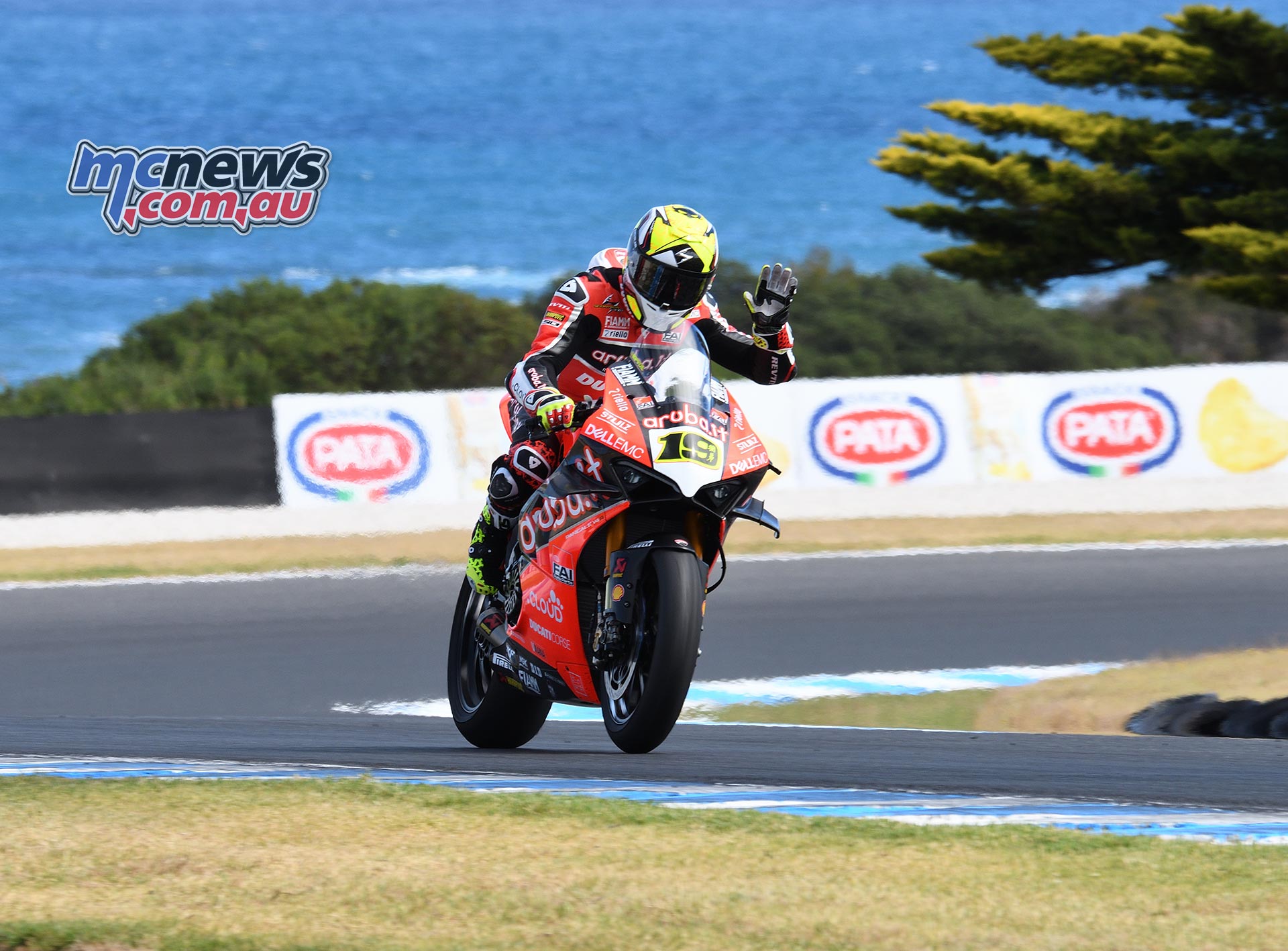
It is not Rea’s fault that he has the measure of every other rider in the field in the past four years, and is arguably the best the class has seen, but truthfully, as a spectacle, it has waned somewhat recently in comparison to the glory days of old, and the added threat that MotoGP has just been so bloody intense and thus takes the vast majority of the limelight.
Could there also be a carrot dangled in front of Bautista, that if he conquers all with the new Panigale V4R in the next couple of years, a return to the premier class may be the reward?
Or, is it a case of the Bologna bosses saying, “Thanks for coming, Alvaro. Gracie mille, you can go and play in the smaller sand pit over there with this toy for a while before you depart for good?”
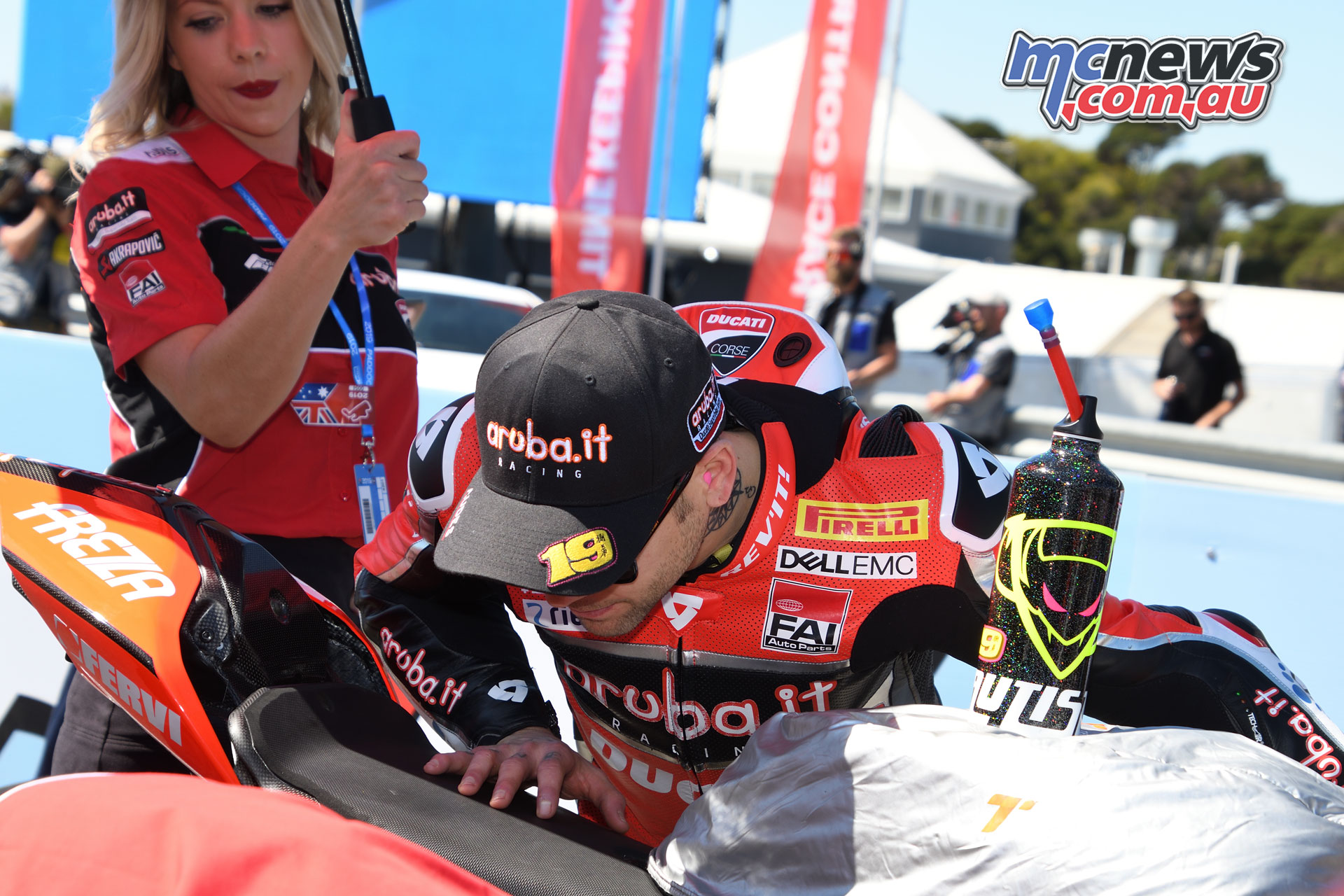
Whichever way you look at it, Bautista has the goods. Of those that has switched from GP to World Supers, Bautista has arguably the second best resume behind Max Biaggi. A 125cc World Championship in 2006, second in the 2008 250cc championship behind the late Marco Simoncelli, and during his nine seasons in MotoGP he scored three podiums and a pole position.
Last year he scored 12 top ten finishes in MotoGP to finish 12th overall. He also ended up 12th overall in 2017 with eight top ten finishes, and was in the same spot in 2016.
Impressive results on what was a second-tier Ducati, (and very second rate Aprilia in 2016), compared to some of his adversaries with lesser results, who have remained in the premier class…
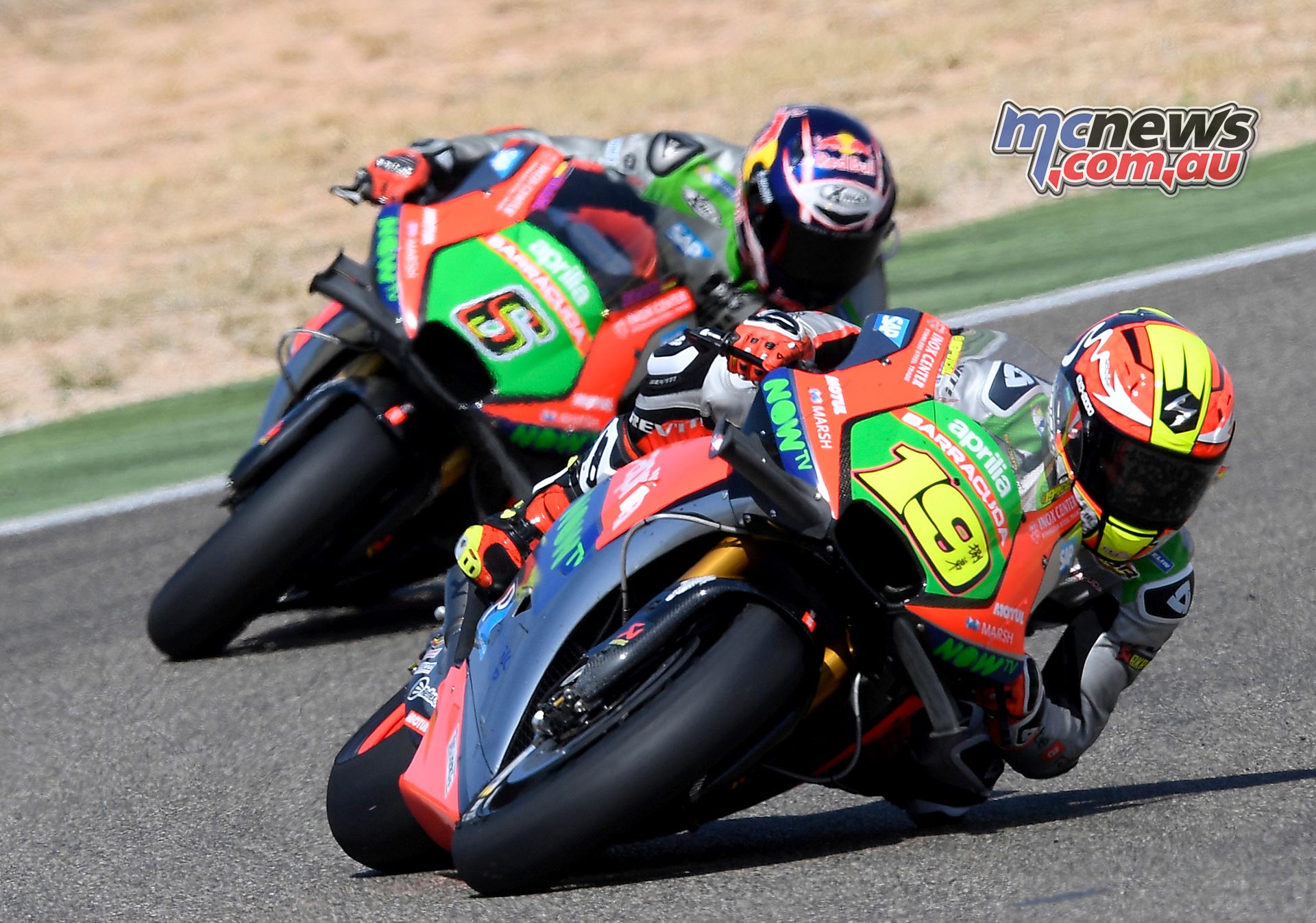
Coming into this year, in all classes he has had 16 GP victories, 49 podiums and 18 pole positions. Not too bloody shabby.
It is somewhat of a surprise to see that he was squeezed out of the MotoGP paddock when others with no podiums, and a lot less consistency in top ten results, are still in a MotoGP grid slot.
With such impressive stats, Ducati showed faith and offered the seat in the factory WSBK team, at the expense of Marco Melandri, who has moved back to ride an in-line four with the “satellite” GMT Yamaha Team.
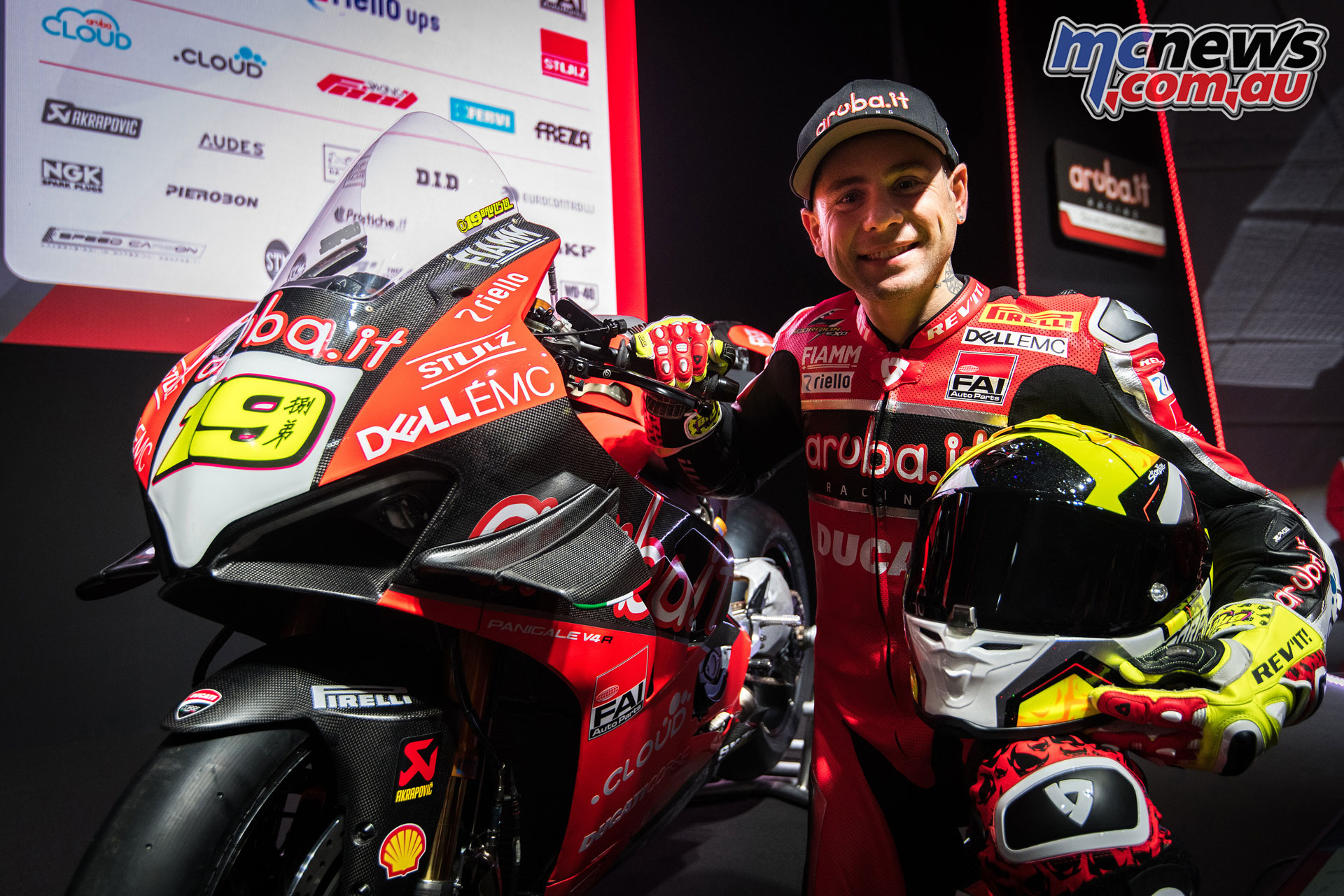
The weapon he will be aboard this year, the new Panigale V4 R has copped a lot of criticism since it was homologated into the championship. It is basically an extremely expensive, road legal version of the Ducati Desmosedici MotoGP bike, with a rev limit in top gear of 16,500rpm.
It’s not the fault of Ducati that they have developed a new 1000cc machine for WSBK-use, considering in previous years they have been given dispensation for running a V-twin. It is commendable that Ducati are producing such high tech and desirable motorcycles for those parts of the public fortunate enough to afford them.
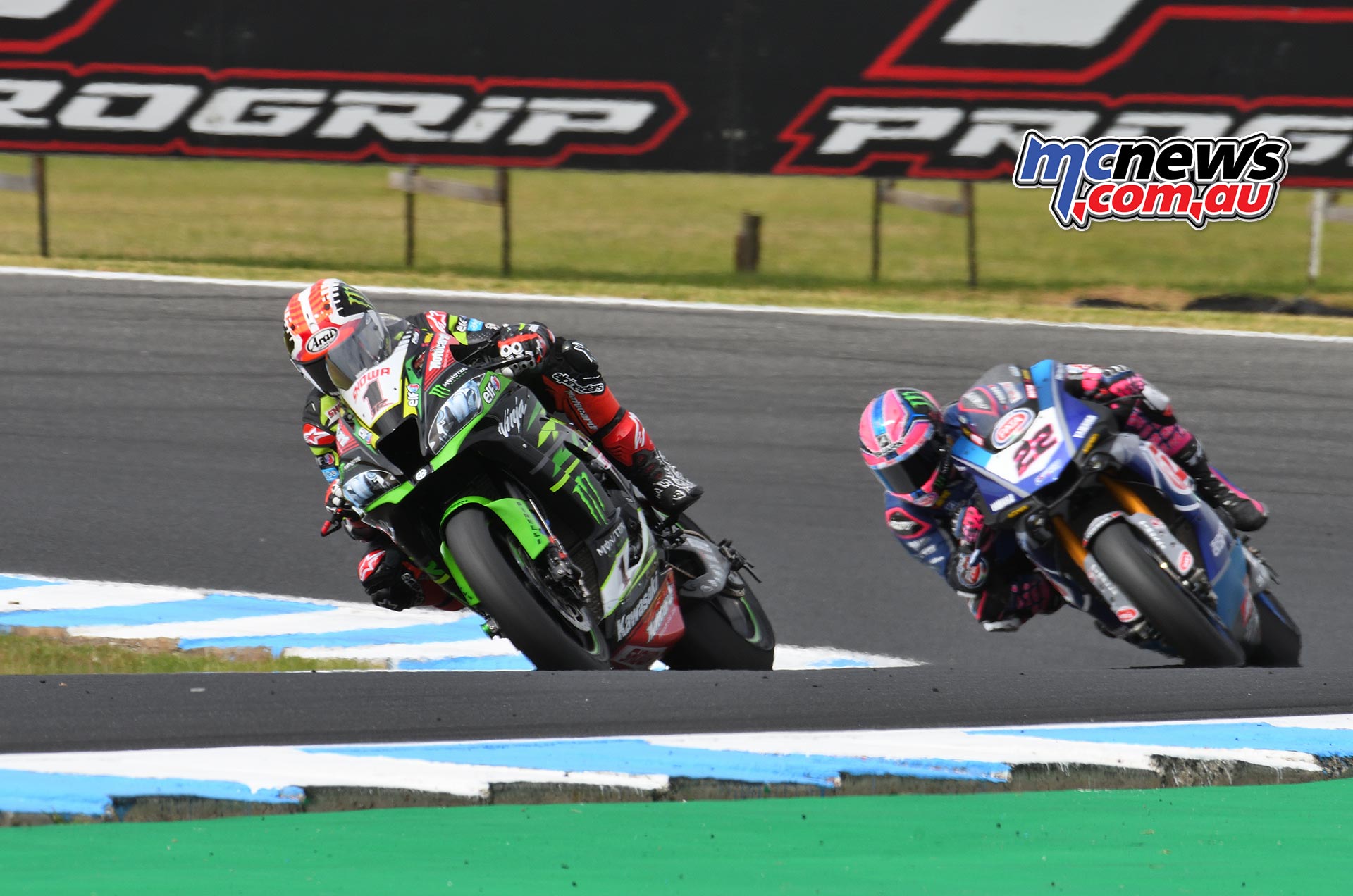
During testing Rea was concerned about the speed and acceleration of the bike that will threaten his championship domination, and said on more than one occasion that there is no substitute for horsepower, and that he feels the V4R has a distinct unfair advantage.
Without Bautista, obviously the racing for the lead would have been a lot closer, but his talent has no doubt brought another dynamic to the championship. Without the Spaniard, it would’ve been situation normal with JR#1 walking away with the spoils. He secured pole position after posting the fastest ever lap – again – to eclipse his “qualy” record from last year, and a new lap record to demonstrate that the ZX-10RR is still a mighty fine package.
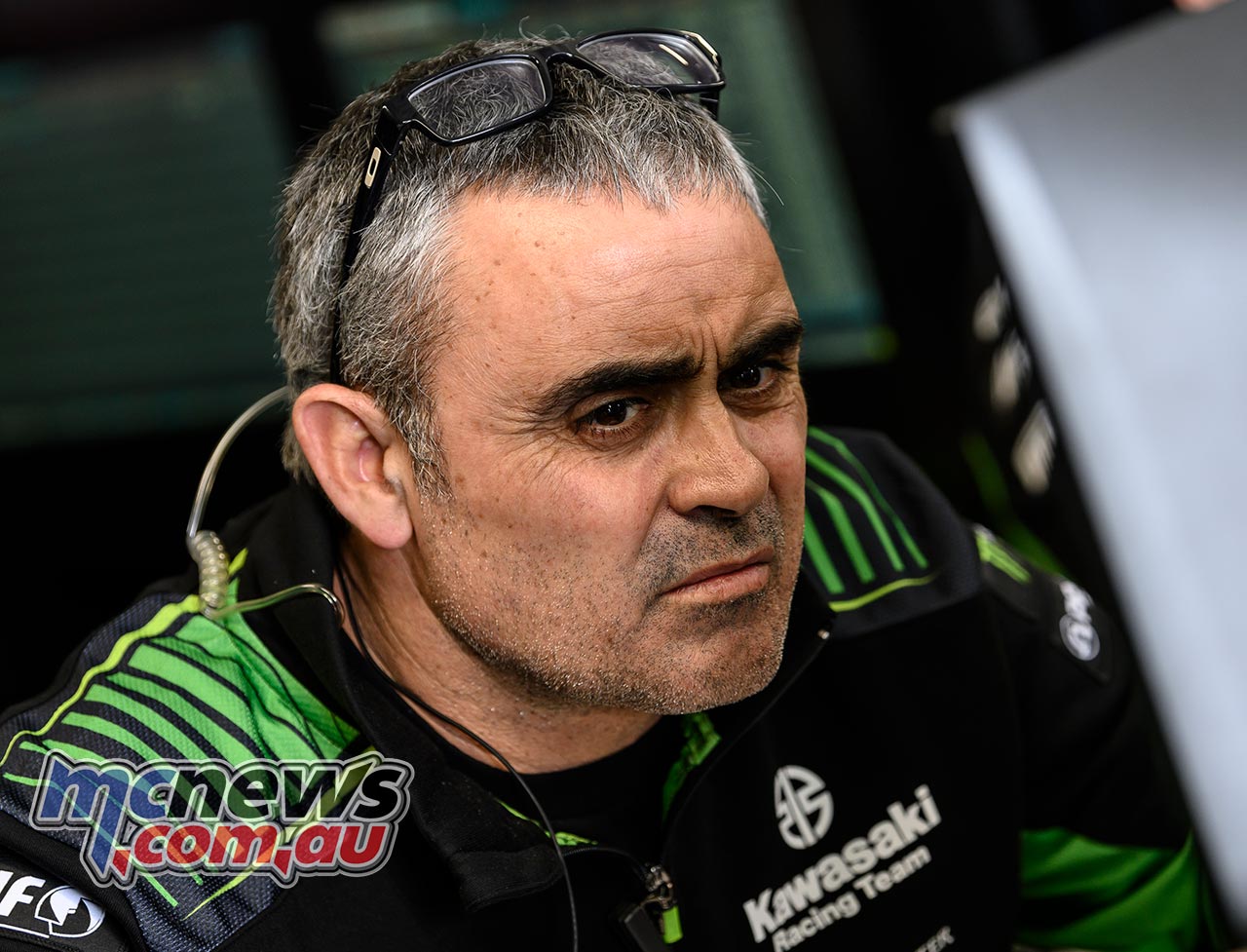
Both Rea and team boss Pere Reba were at pains to point out that this year’s version of the ZX-10RR is the best that the factory has produced, with more to come.
There is also the fact that it was only the opening round of the year, and the new look teams will get closer race-by-race to the distant Duke of Bautista.
Bautista’s dominance commenced during testing, topping the sheets with consistent sub lap record performances. His best lap of the two days (1:30.303) would have put him eighth on the grid of last years Australian MotoGP (in front of Petrucci), the rider that has replaced Lorenzo in the Ducati Team for MotoGP season 2019.
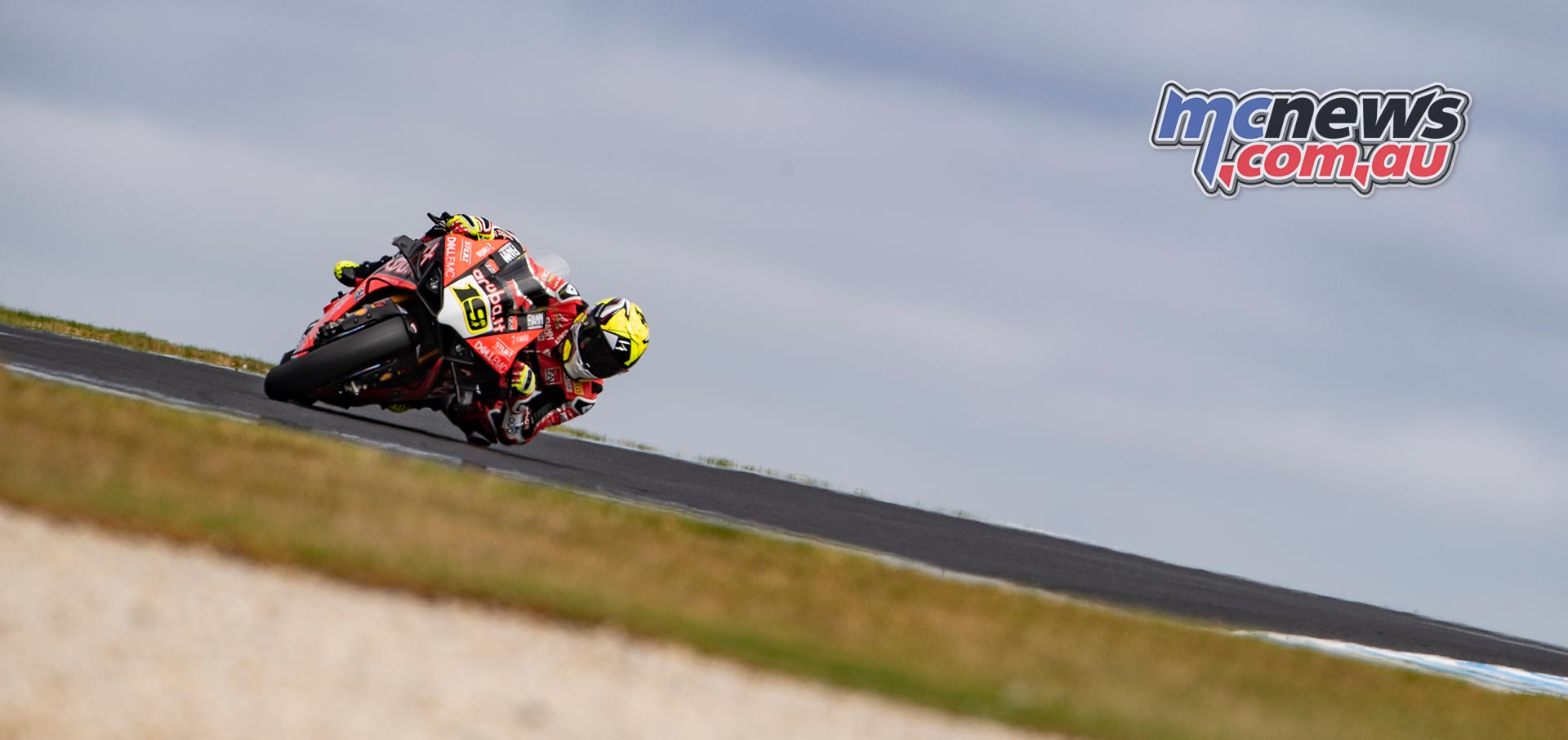
He carried that form all the way through the week, to leave them spinning in the aftermath of Cyclone Alvaro, winning the two 22-lap races in record breaking form.
The signs were ominous after his response to one question I put to him after testing, about just how much difference there is in the power of this new bike compared to the MotoGP weapons he is used to, “The power… you feel it especially in the track like this one, that are very fast, exit from the corner I remember with the MotoGP, just the bike with so much power push a lot, push, push, want to escape. This bike seems like you are stop. So that’s the biggest difference.”
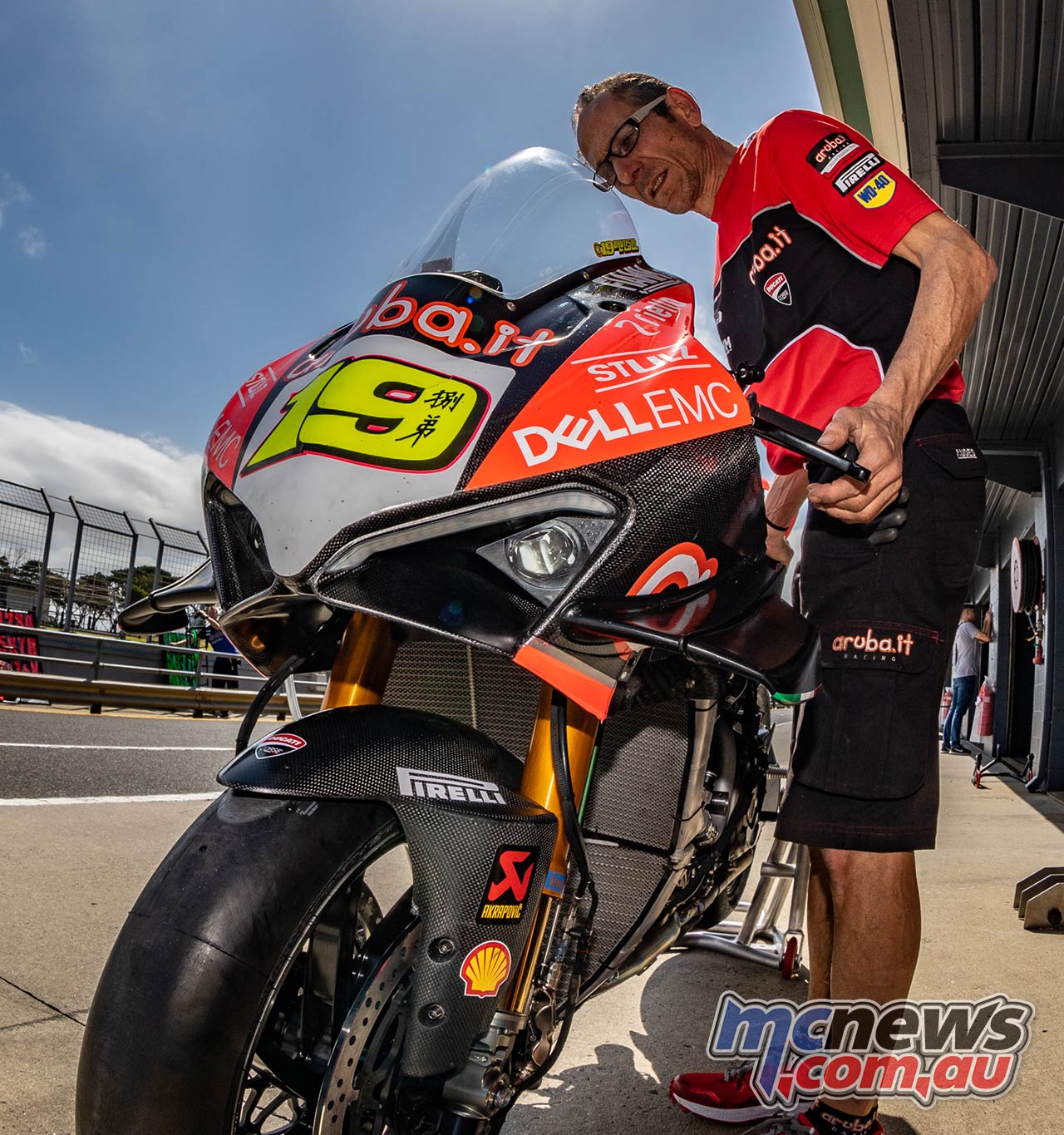
With both races being won by Bautista and the new V4 R by a total of 27.188 seconds, the bike will no doubt come under scrutiny from FIM Technical Director, Scott Smart. However the performance of one man and his bike is not the deciding factor in re-evaluating the rev limits for the Panigale V4R machine, as the results and performance of the all other Ducatis are calculated in the process.
Unless exemplary results start to come from all four Ducatis, the rev limit will come under consideration after the first three rounds as stipulated in the book of rules.
Rea stated after race one that there is no substitute for horsepower and brought up the old chestnut that Kawasaki brought “a knife to a gunfight”, but that is not giving fair credit to Bautista.
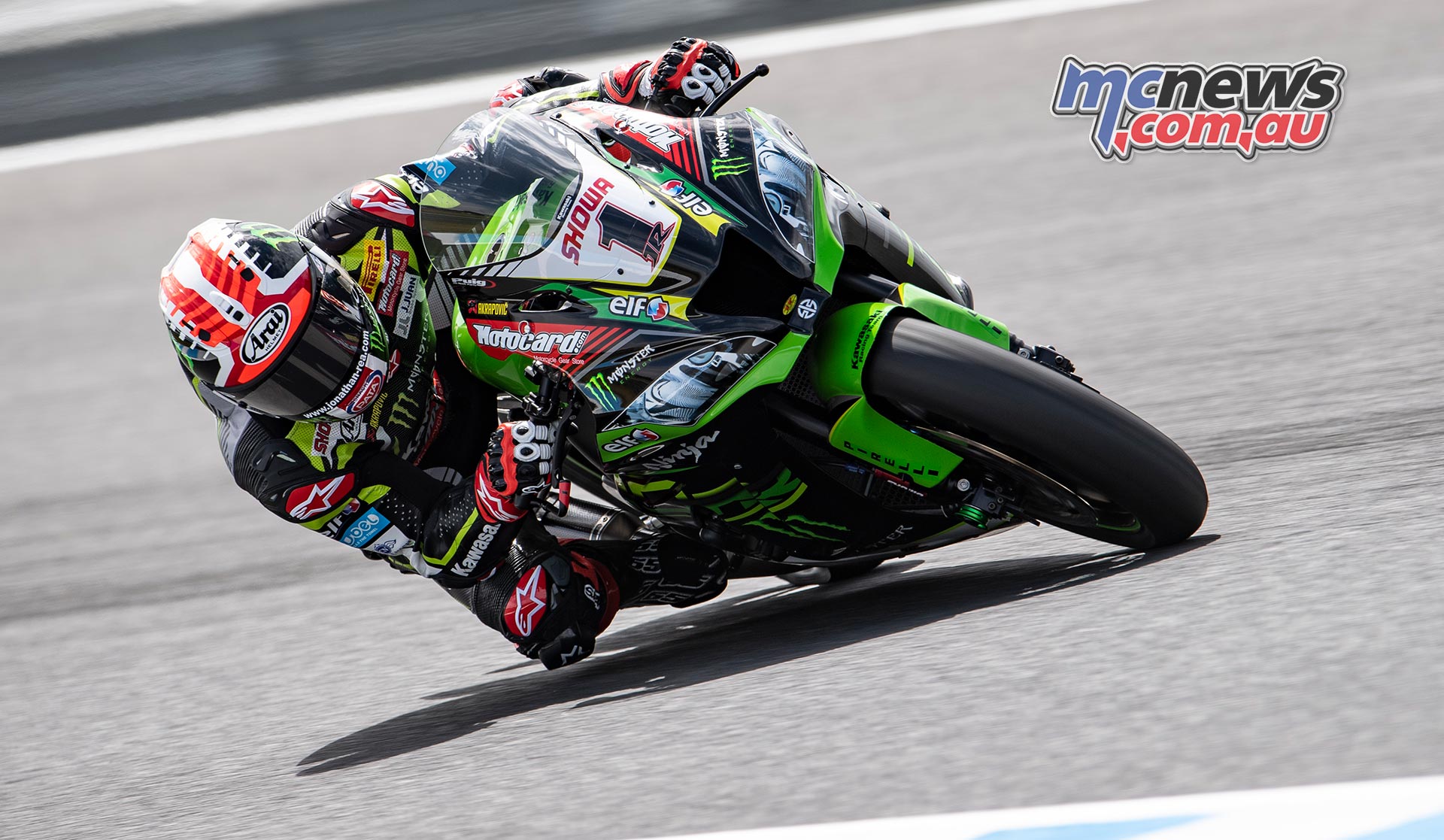
There are four V4 R’s in the field at the moment, Bautista and team mate Davies who both have the latest of everything. The other two are Michael Ruben Rinaldi on the Barni Racing V4 – that according to Ducati personnel isn’t the same spec as the Aruba.it boys, and Eugene Laverty (GoEleven Ducati) who only secured a ride in the last couple of months and is playing catch-up, as his bike is way behind all the others.
Other factors to consider is that Davies has been suffering severe back spasms for some time after years of draping himself around motorcycles that are way too small for his 183 cm, 70 kg frame. That’s also a lot to give away to a team mate who is knee high to a ducktail at 160 cm and 60 kg.
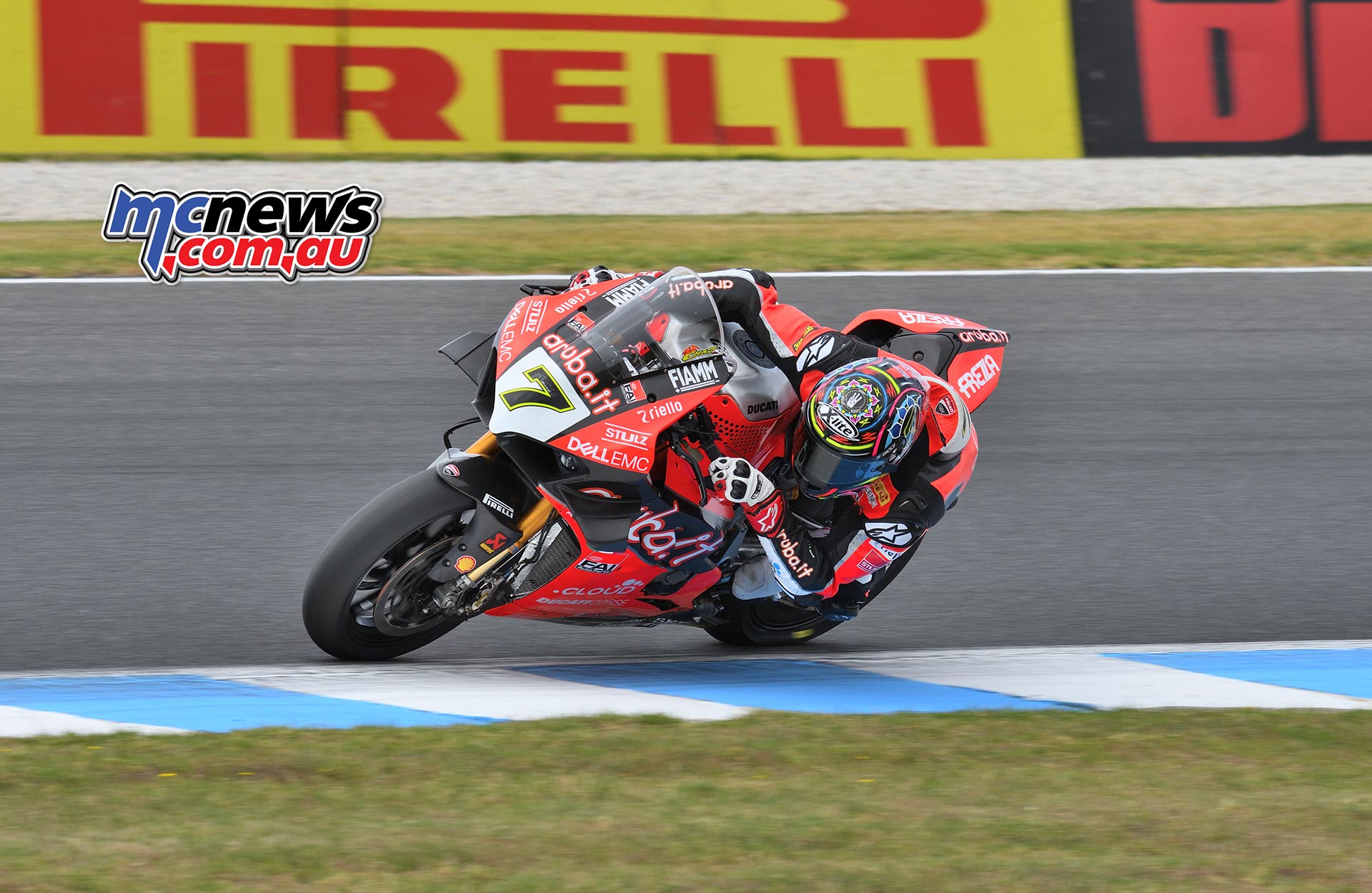
The condition was exacerbated last year during his rehabilitation from shoulder injuries, as he compensated for restricted movement it affected him elsewhere.
He was hampered by the affliction during the test but stated that it was improving by the day. Come the post-race media scrum he was quick to point out that it wasn’t his body health that was causing the issue, but that he just wasn’t gelling with the new bike as yet. And he was quite adamant in pointing that out.
Things came good for him in Race Two where he finished seventh. We won’t get a true indication of how good the Ducati is until Chaz is back to full fitness. We know he can ride, so when he comes good we will know a bit more about how much was the rider, and how much was the bike.
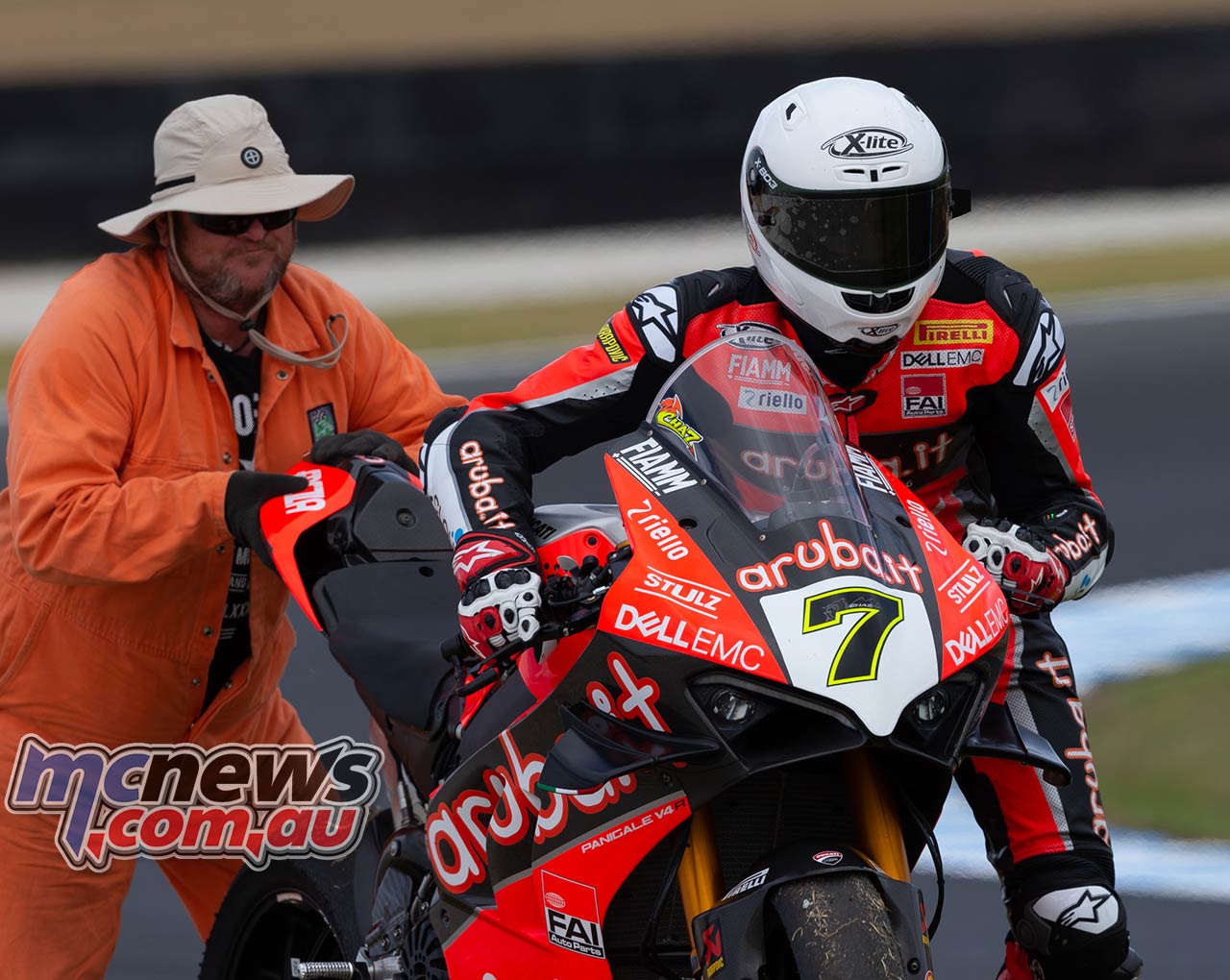
But, Bautista loves the Island. He led the GP last year, and was here only a few months ago compared to the rest. He also found a setting on the bike that ensured he could manage his tyres over race distance.
As for Laverty such was his late signing to ride that he looked as though he may well miss out on a ride this year, that his long time crew chief, great mate and fellow Northern Irishman, Phil Marron was picked up by the Turkish Puccetti Kawasaki Team to crew chief, rising star Toprak Razgatlioglu and so has to start again with a brand new crew
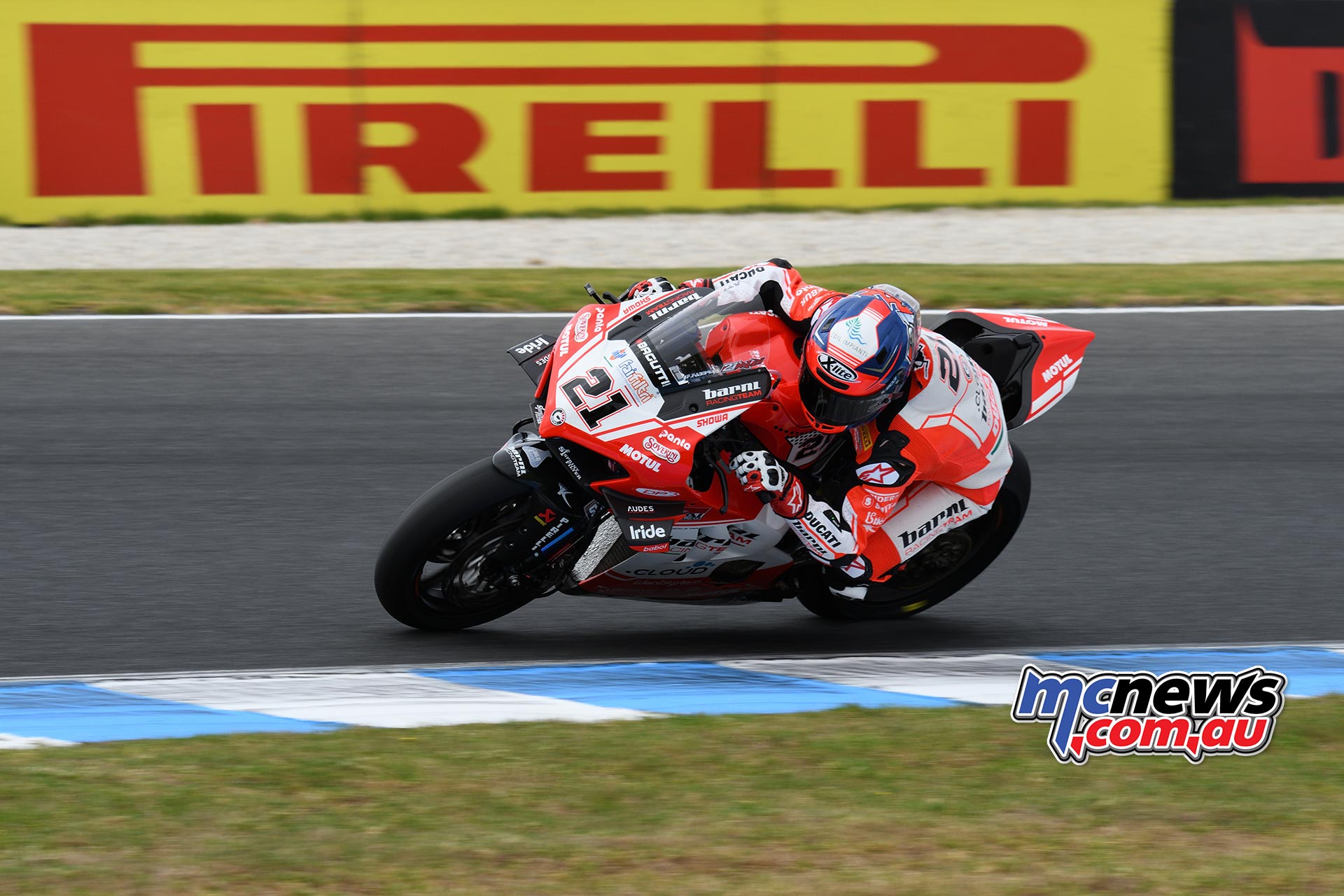
The closest Ducati to the winner in the 22 lappers was Rinaldi in Race One, over 25-seconds behind in ninth place, Davies tenth at 27-seconds and Laverty 12th over 30-seconds adrift. In Race Two Davies was nearly 25-seconds behind his teammate in seventh, Laverty ninth and Rinaldi retired.
In the 10-lap Superpole Sprint, Rinaldi was nearly 11-seconds behind Bautista in eighth with Davis on the Aruba.it factory beast, 14-seconds away in tenth, while Laverty was sandwiched between the two.
Admittedly, the top speeds at Phillip Island were dominated by the Ducatis, but there wasn’t an astronomical discrepancy. Davies was fastest through the traps in all three races with 318.6 km/h in Race 1, 321.4km/h in Race 2 and 326.3 during the sprint race.
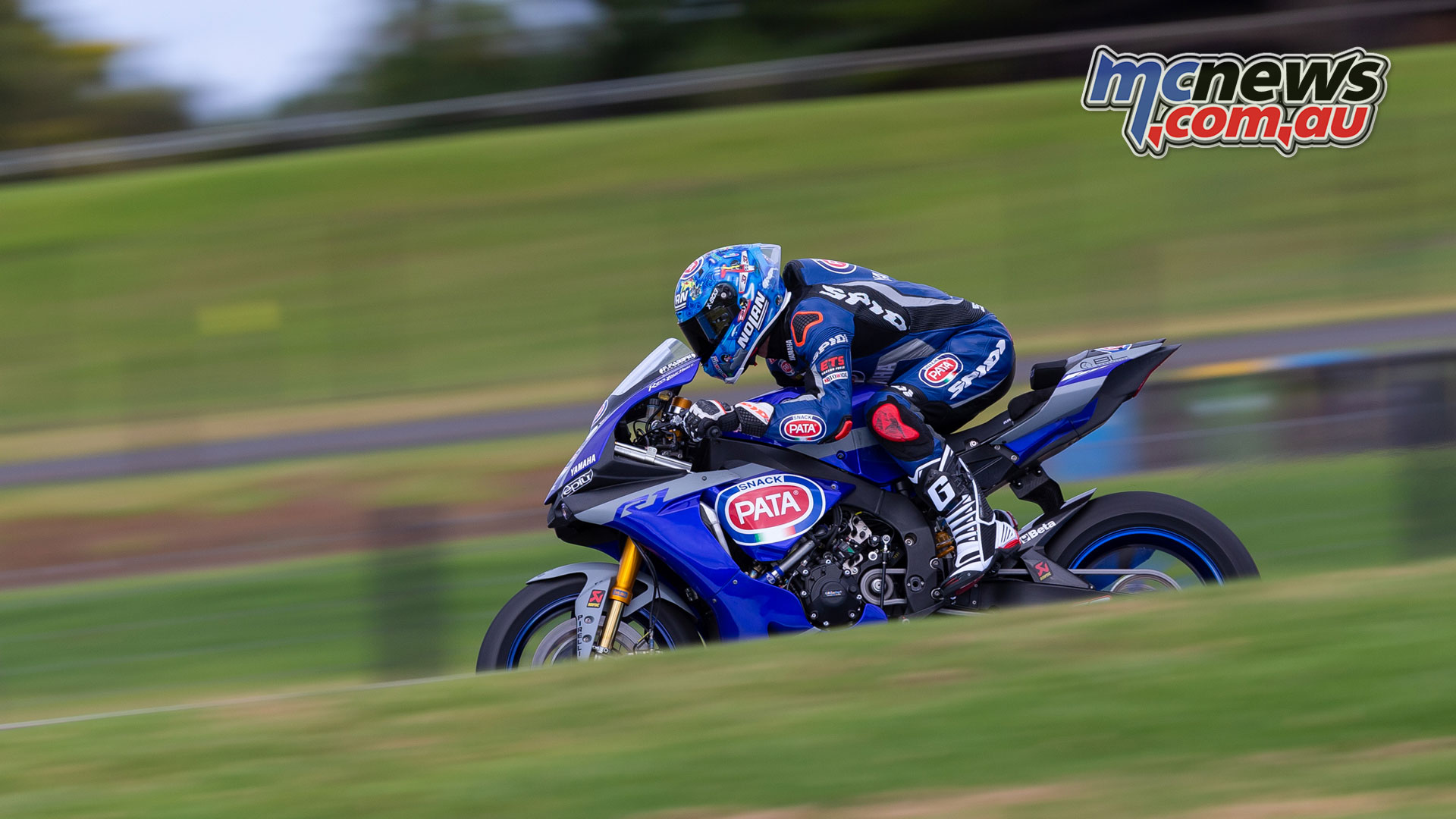
In both races a Yamaha was second fastest, while the Kwakas, Yamahas and the Moriwaki Althea Hondas were around three to eight km/h down over the weekend, with the BMW team the slowest with a deficit of 10-15 km/h .
The hierarchy could lower the limit of the V4R by 2000 rpm and Bautista would still be in the mix. It is not only top end power, as power delivery exiting corners, the mid-range torque curve, and how it gets to that rev limit that plays a bigger role in racing.
Stay tuned for Part 2 of the analysis.
To find out more about how the rev limits were ascertained and what they are for the new machines entering the championship click here for Scott Smart’s explanation.























